Prøve GULL - Gratis
Pelargoniums
The Gardener
|June 2017
Proudly South African

The genus Pelargonium consists of some 230 different species, many of which are of southern African origin. For the past three centuries they have been extensively bred, resulting in an array of flowering plants that are grown globally for their brightly coloured blooms borne over a long period. The common name ‘geranium’ causes some confusion in the plant world, but most gardeners use the term with familiarity and affection. Everybody knows a geranium but few realise that pelargonium is the correct name from a botanical point of view.
Classification
Despite the fact that there are so many different pelargoniums, those used in the garden are usually classified into four main groups depending on their lineage and growth habit. This makes it easy to identify the plants and to be able to grow them in the correct environment for them to perform successfully.
1. Ivy-leafed or trailing pelargoniums (Pelargonium peltatum)
Distinguishing characteristics include trailing stems with lobed leaves of firm waxy texture, almost succulent in appearance. Clusters of single or double flowers are produced on stems held above the foliage. Colours include white, pink, red, mauve and purple. Many bi-coloured hybrids are also available, mainly in red and white combinations.

2. Bush or zonal pelargoniums (Pelargonium zonale)
Denne historien er fra June 2017-utgaven av The Gardener.
Abonner på Magzter GOLD for å få tilgang til tusenvis av kuraterte premiumhistorier og over 9000 magasiner og aviser.
Allerede abonnent? Logg på
FLERE HISTORIER FRA The Gardener

The Gardener
Preserving apples
The end of the apple season means that apples need to be preserved for the next six months until the next harvest is ready.
3 mins
July/August 2025
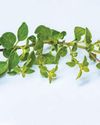
The Gardener
Golden Oregano
Origanum vulgare ‘Aureum’, as its name suggests, is golden yellow in full sun and cool weather. These bright herbs are highly fragrant, with a classic oregano taste and aroma, and are often used in the kitchen for pasta and pizza. In summer, the yellow leaves will be covered with small pink and purple flowers.
1 min
July/August 2025
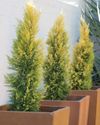
The Gardener
Potting up a conifer
Conifers generally are well-behaved plants with interesting, evergreen foliage and mostly formal and neat growth habits. This makes them stately candidates for roomy containers.
1 mins
July/August 2025
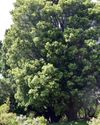
The Gardener
Enduring and venerable trees
There cannot ever be a good reason not to plant a tree, and somewhere there is just the right tree for you...
3 mins
July/August 2025
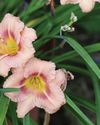
The Gardener
Daylilies make a comeback
Daylilies are making a comeback in 2025 with even more shapes, twists, ruffles, pleats, picotees, curves, and stunning colours and colour combinations. There are singles and doubles, big and small flowers, each unique, and yes, they only last a day! They do, however, have another flower bud just behind that one, ready to show off the next day.
1 min
July/August 2025
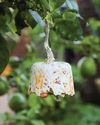
The Gardener
How to make a fat ball
Some birds love a fat ball in winter to boost their energy levels. These are easy to make and a fun project to do with the kids.
1 min
July/August 2025
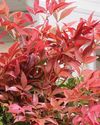
The Gardener
The Princess and Obsession
It only takes two wonderful modern hybrids of old garden favourites to prepare a garden and containers for an unforgettable spring performance.
1 mins
July/August 2025
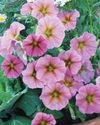
The Gardener
Pink and pretty
Pink colour shifters with hot appeal...
2 mins
July/August 2025

The Gardener
GROW the WALL
If you want lots of flowers in plantable concrete retaining wall blocks or lush stems and foliage cascading over dry stone walls, we have good plant suggestions for you!
5 mins
July/August 2025

The Gardener
Winter indoor plant care
Winter can be a tough time for your houseplants; a drop in natural light, drier air, and cold drafts can all influence their lush appeal. As plant lovers, spending more time indoors in winter creates opportunities to keep a close eye on your leafy companions and make some changes to avoid these common winter blues.
1 min
July/August 2025
Translate
Change font size

